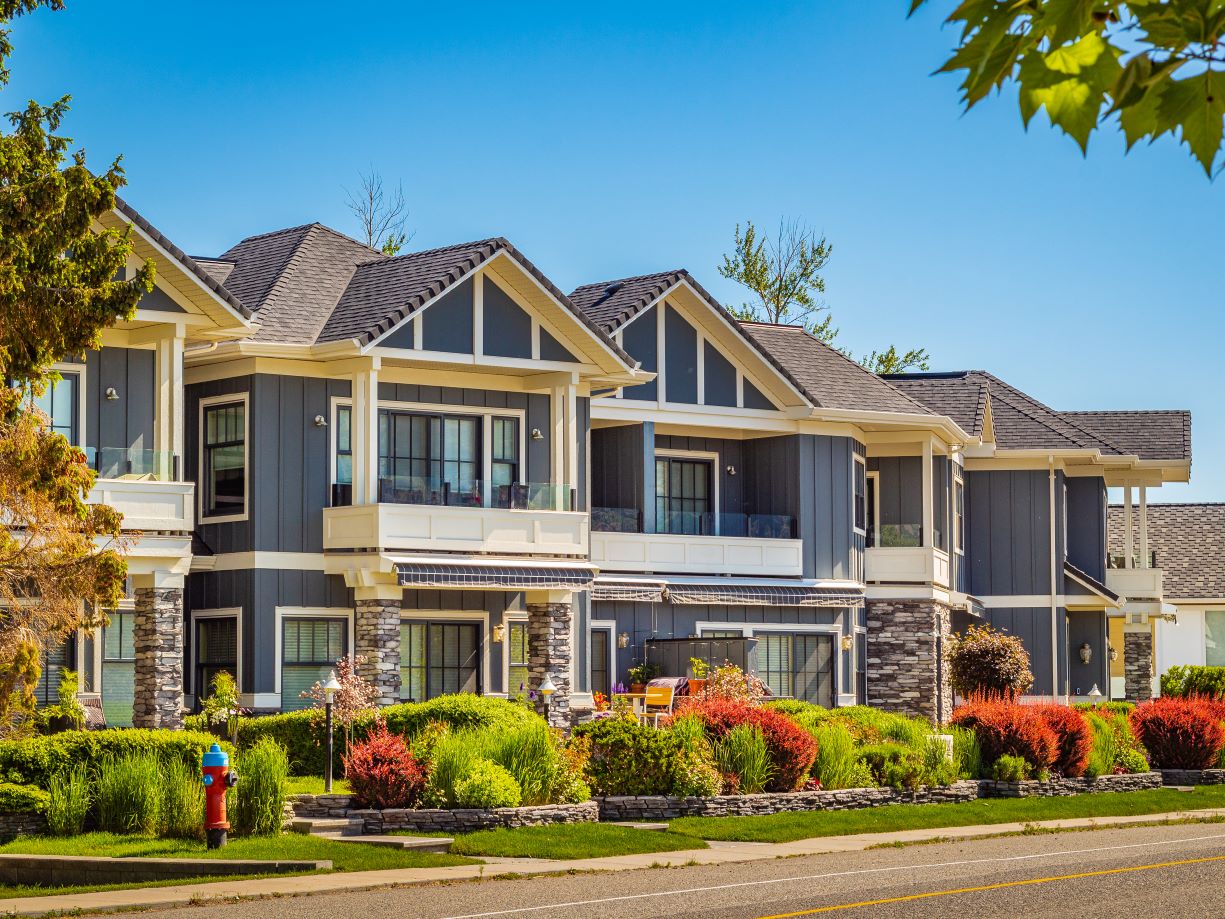When summer arrives, condominium communities have the perfect opportunity to refresh their outdoor spaces and elevate curb appeal. Thoughtful condo landscaping ideas can transform common areas into welcoming, well-maintained environments that residents are proud to call home. Strategic landscaping does more than beautify; it enhances resident satisfaction, strengthens community pride, and increases long-term property value.
For condominium boards, the summer season is the ideal time to plan and implement landscaping projects that improve both the look and livability of the property. The following guide outlines practical and affordable ways to make your community shine this summer.
Start with a Walkthrough: Take Stock of What You Have
Before planting anything new, walk the property. Are there dead plants, patchy grass, or faded signage? Sometimes, the most impactful improvements begin with a thorough cleanup.
Invite your property manager or landscaping provider to join you for the walkthrough. They can identify problem areas and recommend practical solutions. Consider asking residents for feedback as well, since they may notice details that are easy to overlook.
Focus on the Front First: Create a Welcoming Entrance
The front entrance sets the tone for your community. Seasonal planters, clean sidewalks, and healthy greenery can make a significant impression without requiring a large investment.
If signage appears worn, consider updating it with new lighting or adding decorative flower beds around the base. Simple updates such as tidy edging, mulch, and consistent plant care can make the space look polished and inviting.
Add Summer Colour with Purpose
Seasonal flowers and perennials bring energy and vibrancy to shared spaces. Mix bright annuals such as marigolds, petunias, and impatiens with hardy native plants that return each year.
To create depth and texture, include ornamental grasses or tall flowering plants like coneflowers. For communities with allergy-sensitive residents, low-pollen plant varieties help maintain comfort for everyone.
Keep Lawns Lush Without Wasting Water
A healthy green lawn reflects care and attention, but it requires a mindful approach. Schedule regular mowing, aeration, and fertilization to maintain a vibrant and resilient landscape.
Efficient Watering Tips
Water lawns and gardens early in the morning to minimize evaporation and allow roots to absorb moisture before the day heats up. Inspect irrigation systems regularly to ensure they are working properly, as broken sprinkler heads or poorly timed watering can cause waste and dry patches. Watering early in the morning helps minimize evaporation. The City of Toronto’s Water Lawn and Garden Tips explain how timing and irrigation systems can reduce water waste.
Installing rain sensors or drip irrigation systems for flower beds and trees can reduce water consumption and lower maintenance costs.
Think Beyond Grass: Planters and Container Gardens
For condominiums with limited green space, planters and container gardens offer a practical solution. They can transform patios, balconies, and rooftop areas into vibrant outdoor spaces.
Combine flowers, herbs, and ornamental grasses in durable, well-coordinated planters that complement your building’s architecture. Seasonal rotations can keep these displays fresh throughout the year.
Polish Up Shared Spaces
Common areas such as courtyards, pools, and rooftop lounges should feel as welcoming as the front entrance. Add greenery to soften the space and create a relaxing atmosphere.
Where possible, incorporate benches, umbrellas, or shade structures to encourage residents to enjoy the outdoors. Ensure that all pathways remain clear, well lit, and free from tripping hazards.
If your community includes playgrounds or other recreational spaces, you may find our guide on Condo Playground Maintenance: A Board’s Guide useful. It explains how to plan maintenance and inspections for safety and compliance.
Budgeting and Planning with Your Property Manager
Collaborate with your property manager to align landscaping goals with your community’s budget. Phased upgrades can help manage costs while maintaining steady progress.
For example, focus on front entrance improvements this year and plan courtyard enhancements for the next season. Obtain multiple quotes from landscaping providers to ensure quality and cost efficiency.
Go Green with Sustainable Landscaping
Sustainable landscaping practices not only support the environment but also reduce maintenance demands. Use native plants, drought-resistant ground covers, and mulch to retain soil moisture and limit the need for frequent watering.
Consider creating pollinator-friendly gardens with lavender, milkweed, or yarrow to attract bees and butterflies. These gardens support biodiversity while adding visual interest to your community.
For more sustainable ideas and operational insights, explore related resources on ICON’s Condo Management Services Page.
Keep Communication Open
Keep residents informed about upcoming landscaping projects through newsletters, email updates, or the condominium portal. Transparency helps build trust and encourages engagement.
Establishing a small landscaping committee can also be beneficial. It allows residents to share feedback, assist with seasonal planting, and take an active role in maintaining the community’s appearance.
Final Thoughts
Landscaping is about more than appearance; it represents pride, organization, and community care. A well-planned summer landscaping program can enhance curb appeal, increase property value, and improve resident satisfaction.
By working closely with your property management team and following these best practices, your condominium can create beautiful, functional outdoor spaces that residents are proud to call home.
Frequently Asked Questions
What are the best low-maintenance plants for condos?
Native perennials such as black-eyed Susans, coneflowers, and ornamental grasses thrive with minimal care and withstand Ontario’s climate.
How often should landscaping be reviewed during the summer?
A monthly walkthrough with your property manager ensures that irrigation systems, plants, and safety measures remain in good condition.
How can landscaping support sustainability goals?
Integrating drought-resistant plants, efficient watering systems, and pollinator-friendly gardens helps reduce environmental impact and promotes biodiversity.




